Oriente Hungarian maritime shipping ltd
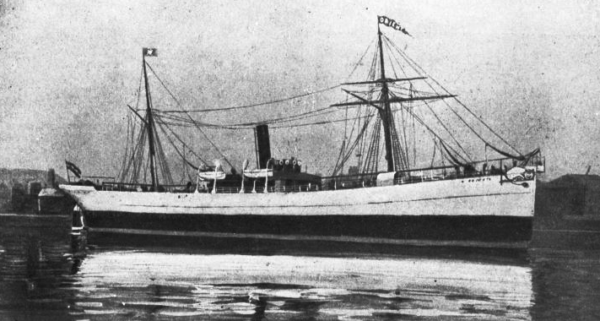
The history of Oriente Ltd. began in 1891, when a few entrepreneurs from Fiume, led by Lajos Ossoinack, built the Orient steam engine. When Ossoinack proposed the termination of the contract with Lloyd, he immediately proposed, as manager of Orient, that the state should entrust the Oriente Rt., which was in the process of being formed, with the task of providing connections to Rijeka and the Far Eastern ports.[i] This year, however, the state did not give subsidies to the Orient, but first financed small coastal shipping by creating the Hungarian-Croatian Shipping Company. The following year, however, the steamship Orient also received a one-off state subsidy of 19 000 HUF, while the preparatory work for the 1893 Free Navigation Act was still in progress.
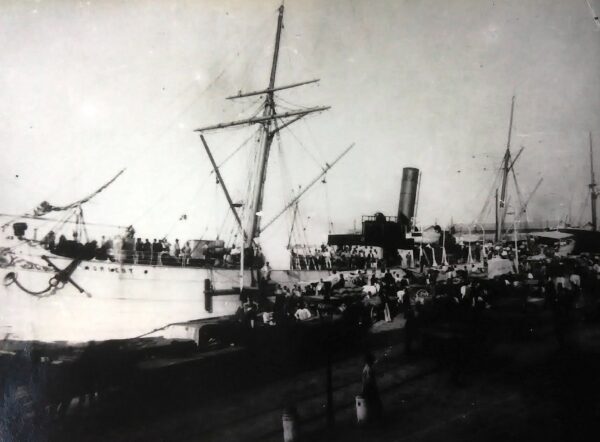
Owners of the steamer Orient[ii]
| Carat (ownership share) | Owner |
| 3,75 | József Gorup |
| 2,625 | Plőch Hannibal |
| 2,25 | András Poschich |
| 1,125 | Antal Luppis |
| 0,75 | Lajos Ossoinack |
| 0,75 | Baccich Iginio Baltazar |
| 0,75 | József Blasich |
| 0,75 | János Corossacz |
| 0,75 | Jenő Károly Cunradi |
| 0,75 | Count Lajos Domini |
| 0,75 | Ágoston Ivanossich |
| 0,75 | Emilia Jechel |
| 0,75 | Ferenc Luppis |
| 0,75 | Máté Paicurich |
| 0,75 | János Randich |
| 0,75 | János Sirola |
| 0,75 | Henrik Baccich |
| 0,75 | Henrik Meynier |
| 0,75 | Félix Rosenberg |
| 0,75 | Antal Sterk |
| 0,375 | Deseppi Carmino |
| 0,375 | Valcich Henrietta |
| 0,375 | Cosulich Giuseppina |
| 0,375 | Dr Antal Seemann |
| 0,375 | Weaver Faustino |
| 0,375 | Dr György Catti |
When the law came into force in 1893, the owners of the 24 carats of the steamer Orient founded a joint-stock company under the name Oriente Magyar Hajózási Rt. with a share capital of K 2 000 000. The limited company took over the steamship Orient and ordered two more steamships from Great Britain: the Siam and the Burma. The company was based in Rijeka and had its offices in the Adria Palace.[iii] Reflecting the interest in the Far East, the company used a yellow flag with a glowing sun on a red background.
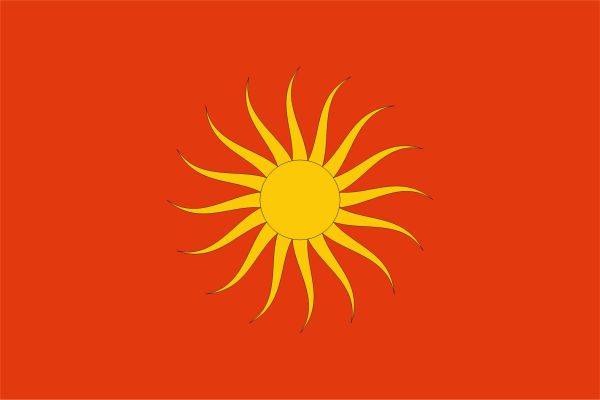
Just as Ossoinack was instrumental in owning the steamship Orient, he became the CEO of the joint stock company. Antonio Francesco Luppis became the company's president, and Alajos Cosulich and József Gorup became members of the board of directors. After the death of Lajos Ossoinack in 1904, the post of CEO was taken over by Lajos Nicolich, who, as we shall see, also headed Indeficienter Rt. from 1907 to 1909.[iv] According to archival records, the company tried again in 1900 to obtain state-subsidised status.[v] Oriente Rt. would have replaced Lloyd's Fiume-Indochina line with a cheaper fare of 6 or 12 fixed flights per year, but the government did not support the company's request, presumably because of the tense political situation in Fiume. Even Baron Dezső Bánffy, who became Prime Minister in 1895, had a strong centralising policy which provoked strong opposition among the people of Rijeka, violating the ancient autonomy of the town. As a result, an almost hostile political relationship developed between Fiume and Hungary, which also had an economic impact, both in the reduction of the port's trade and in the fact that Oriente Rt. - and thus Lajos Ossoinack, who was the dominant figure in Fiume politics - could not count on the support of the government in Budapest.[vi] Later in 1904, the company came forward again with a proposal to replace NDL's eastern routes, more specifically to request the right to transport sugar between Rijeka and Singapore from the Ministry of Commerce.[vii] Although the Hungarian Royal Maritime Authority also supported Oriente's offer, the Hungarian government did not entrust the company with the operation of regular services, but increased shipbuilding and freight subsidies in the new law supporting free navigation introduced in 1907, and Oriente continued to compete with the newly founded government-owned Atlantica Shipping Company on a market basis in the eastern traffic of Austrian Lloyd.
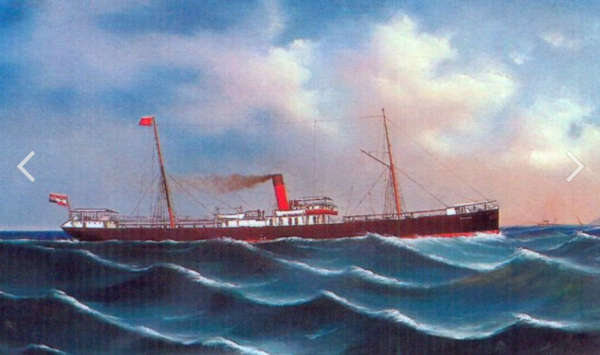
The Oriente is also responsible for the biggest pre-war loss in the history of the Hungarian navy in Fiume before the First World War. During the Russo-Japanese War, the company undertook the transport of coal to Vladivostok for the heating of Russian warships with its two ships Burma and Siam.[viii] During the war, Vladivostok, one of the largest military and commercial ports in the Far East, provided the necessary logistical hub for the Russian Navy. The Oriente was responsible for the delivery of nearly 8 000 tons of coal by its two steamers. On 11 November 1904, the company signed a charter contract in London with the British Mann George Company through a Glasgow merchant. The charter party and bills of lading listed Hong Kong, Shanghai and Kiaochau as destinations, but not Vladivostok.[ix] In addition, the way in which ship charter contracts were concluded at that time was still poorly regulated, with no accepted international practice, so the circumstances of the transport could remain sufficiently unclear. A few days later, both ships set sail, with some 4 000 to 4 000 tonnes of anthracite, a coal of high calorific value and quality, being taken on board in the port of Cardiff. The Burma departed on 19 November 1904 under Captain Valentin and the Siam on 23 November 1904 under Captain Xigga.[x] The Burma arrived in Hong Kong on January 9, 1905, a few days later than the Siam. In Hong Kong, Kiaochau was named as a further destination, but both ships deviated from the route and attempted to cross the Soya (or La Preluse) Strait between the north coast of Hokkaido and the south coast of Sakhalin. The 40 kilometres of floating ice in the strait made it dangerous to continue the journey, as without a double bottom the ice could have been fatal for the boats, and they could not rely on each other's help as they were sailing separately. The boats had to turn south towards the Tsugaru Strait between Hokkaido and Honshu. This proved to be the fastest route, but also riskier because of the Japanese territorial waters. As the strait was strictly controlled by the Japanese, the two ships were eventually intercepted. The Burma was intercepted by the Japanese torpedo boat No. 30 on the evening of 25 January 1905 off the southeastern tip of Hokkaido Island, about ten miles off Cape Shiokubi, and the Siam was intercepted by the cruiser Asama in the late afternoon of 31 January, not far off Cape Erimo.[xi] The Hungarian press was extremely tight-lipped about the case. The Japanese authorities eventually confiscated both Hungarian steamships. According to press reports from Fiume at the time, the crew were treated well, only the two captains were forbidden to meet each other.[xii] The case was, of course, filed by Oriente, and was prosecuted by the Yokosuka High Court Martial. The judgment, however, classified the cargo as contraband of war. In the course of the proceedings, attempts were made to defend the ship's owner by arguing that any secret instructions given by the ship's charterer to the captains could not be incriminating for the owner company, or that the purpose of the coal could not be proven, as it could serve industrial as well as military interests.[xiii] Although Vladivostok was indeed both a military and commercial port, it was also a staging post and supply base for the Russian navy during the war. The two ships could not be returned to the Oriente and were eventually used by the Japanese merchant navy. Burma sailed the ocean as Esan Maru, Siam as Erimo Maru. Interestingly, according to Hungarian press reports in 1905, the Russian government deposited the full value of the two ships and the price of the cargo with the British bank, so the Oriente did not actually suffer any financial loss.[xiv] The captains of the two ships - in the Hungarian transcription of the time János Xigga and Pál Valentin - returned home from Japan on 3 June 1905 on the steamer Vindobona Lloyd, which was bound for the rice mill at Fiume with a large cargo of rice. The crew of the ships did not return, they were stationed in Japan.[xv]
Thanks to indirect state aid, Oriente Rt. has been able to increase its fleet and thus its traffic capacity, despite losses. After the purchase of the Siam and the Burma in 1893, the company sold the steamship Orient in 1899 and bought the freighter Java instead, followed by Borneo in 1900, the Kobe in 1901 and the Luzon in 1902. The Burma and Siam, lost in the Russo-Japanese War in 1904, were replaced by the Siam 2 in 1906 and the Burma 2 in 1912. With these, the company had an average shipping capacity of 8 000 NRT in the first decade of its existence and 13 000 NRT on average in the 1900s.[xvi]
We can learn about the company's ship traffic by summarising the invoices for a single voyage preserved in the archives of Fiume.[xvii] Between May 1893 and August 1914, this represented a total of 928 flights, of which 377 had an exact date and freight. In terms of ports, the company's shipping traffic was balanced. Rijeka was the most frequent port of call with a share of 8,41% of total traffic, followed by Cardiff with 5,5% and Singapore with 3,13%. If we look at the company's routes by continent, we see that the company regularly called at both the east and west coasts of North America; both coasts of South America (remember that the Panama Canal was not navigable at that time, so ships had to go to Cape Horn); Indonesia; but also the Christmas Islands, the port of Melbourne in Australia and Honolulu in Hawaii. Its main traffic was concentrated in Europe and the Far East, in line with the company's objectives.
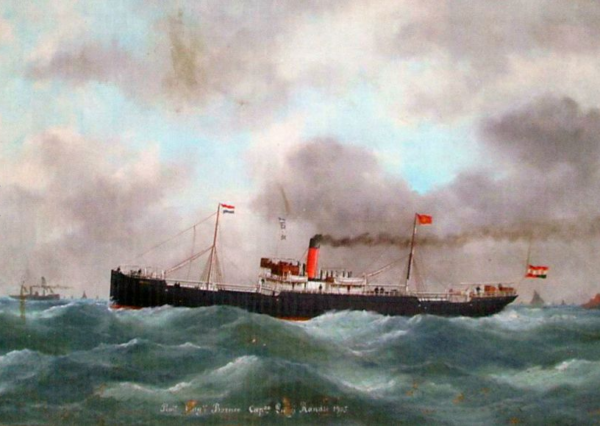
By summing up the free shipping invoices already referred to, the total annual turnover of the company is plotted. On this basis, the life of the company can be divided into three stages. The first, from its foundation in 1898, was characterised by slow growth and a stable market position, when the still developing Hungarian merchant navy was living in the shadow of Lloyd of Austria and could not really find a market for itself. During this period, the company made an average of 15 voyages a year, carrying 29 000 tonnes of cargo (probably more, but the many missing documents make that certain). The second phase, from 1899 to 1904, was the period of the company's growth. By this time, Oriente was able to reinvest its profits in new ships and to increase the volume of traffic by operating more and more routes. This boom was interrupted by the transport operation during the Japanese-Russian war. During this period, the company transported an average of 24 451 tonnes of goods per year on 25 routes. The third phase lasted from 1905 to 1913, when the average annual volume of goods handled was proven to be 103 816 tonnes, again with 25 flights a year.[xviii] In total, according to archival accounts, Oriente Rt. transported 1 369 382 tons of goods between 1893 and 1914. After the First World War, Oriente continued to operate under the Italian flag in independent Rijeka and was able to survive until 1939, but the Second World War did not survive its steamships, which by then were completely obsolete, and the company went out of business.[xix]
Weighting the ports most frequently visited by the company by the volumes of cargo, we obtain the following ranking: 28% of the company's total cargo was destined to Rijeka, 11.4% to Cardiff, 9.5% to Singapore. The total volume of goods shipped by the company to Rijeka was 308 986 tonnes, of which 64% was paddy rice. The same product accounted for 17,5% of the company's total turnover, so that its turnover in Rijeka was largely in line with its original purpose of meeting the rice miller's import requirements.
The share capital of the company was K 2 000 000 at the time of its foundation, and increased by K 500 000 in 1899, 1902 and 1903, and K 3 500 000 in 1904-1913. The dividends paid out were lower than those of state-subsidised companies, the reason being that Oriente was organised on a market basis and therefore had to finance any improvements from its own resources. For this reason, the company put an amount equal to the dividends paid into a reserve fund each year, and only in the pre-war boom did it start paying out almost all its profits in dividends (which is why the dividend jumped from K 210 000 in 1911 to K 420 000 in 1912-13). Although the company's profits for that year included the free shipping subsidies of 1893, 1895 and 1907, it is worth noting that Oriente Rt. received K 2 091 586 in state subsidies from the Ministry of Trade for its services to Rijeka between 1893 and 1914, and a total of K 1 719 240 in shipbuilding subsidies between 1893 and 1918.[xxii] All in all, Oriente Ltd. was a successful free shipping company, the shareholders received a return on their investment, and the company's manager, Ossoinack, was able to secure the import of the rice huller he managed in Rijeka through the ships of Oriente Ltd.
[i] DAR. TH. 89-1893-XXI-1458.
[ii] DAR. TH. Ship's Register. 241.
[iii] Sučević-Međeral 2017.
[iv] Pelles 2017d.
[v] DAR. TH. 416-1900-XXI-1181.
[vi] Ordasi 2014.
[vii] DAR. TH. 5-1904-IV-8.
[viii] Tóth-Zsigmond 2011.
[ix] Meiji:483.
[x] Meiji:489; 519.
[xi] Nichiro 1905.
[xii] Fiumei Szemle, 9 April 1905:5.
[xiii] Tóth-Zsigmond 2011.
[xiv] Hungary, 31 January 1905:14 and Magyar Nemzet, 4 February 1905:6.
[xv] The Newspaper, 4 June 1905, 11:11.
[xvi] DAR. TH. Ship's Register. 241.
[xvii] Oriente papers 2016.
[xviii] Pelles 2016e.
[xix] DAR. 714.
[xx] Oriente papers 2016.
[xxi] Compass [1895-1914].
[xxii] State budget 1917-1918.
Founded in 1893
Date of cessation: 1918
Founders: Lajos Ossoinack
Securities issued:
| Oriente Hungarian maritime shipping ltd |
Main activity: maritime shipping
Author: by Dr. Márton Pelles
Founded in 1893
Founders: Lajos Ossoinack
Determinant drivers are not set
Main activity: maritime shipping
Main products are not set
Seats are not configured
Locations are not set
Main milestones are not set
Author: by Dr. Márton Pelles
Oriente Hungarian maritime shipping ltd

The history of Oriente Ltd. began in 1891, when a few entrepreneurs from Fiume, led by Lajos Ossoinack, built the Orient steam engine. When Ossoinack proposed the termination of the contract with Lloyd, he immediately proposed, as manager of Orient, that the state should entrust the Oriente Rt., which was in the process of being formed, with the task of providing connections to Rijeka and the Far Eastern ports.[i] This year, however, the state did not give subsidies to the Orient, but first financed small coastal shipping by creating the Hungarian-Croatian Shipping Company. The following year, however, the steamship Orient also received a one-off state subsidy of 19 000 HUF, while the preparatory work for the 1893 Free Navigation Act was still in progress.

Owners of the steamer Orient[ii]
| Carat (ownership share) | Owner |
| 3,75 | József Gorup |
| 2,625 | Plőch Hannibal |
| 2,25 | András Poschich |
| 1,125 | Antal Luppis |
| 0,75 | Lajos Ossoinack |
| 0,75 | Baccich Iginio Baltazar |
| 0,75 | József Blasich |
| 0,75 | János Corossacz |
| 0,75 | Jenő Károly Cunradi |
| 0,75 | Count Lajos Domini |
| 0,75 | Ágoston Ivanossich |
| 0,75 | Emilia Jechel |
| 0,75 | Ferenc Luppis |
| 0,75 | Máté Paicurich |
| 0,75 | János Randich |
| 0,75 | János Sirola |
| 0,75 | Henrik Baccich |
| 0,75 | Henrik Meynier |
| 0,75 | Félix Rosenberg |
| 0,75 | Antal Sterk |
| 0,375 | Deseppi Carmino |
| 0,375 | Valcich Henrietta |
| 0,375 | Cosulich Giuseppina |
| 0,375 | Dr Antal Seemann |
| 0,375 | Weaver Faustino |
| 0,375 | Dr György Catti |
When the law came into force in 1893, the owners of the 24 carats of the steamer Orient founded a joint-stock company under the name Oriente Magyar Hajózási Rt. with a share capital of K 2 000 000. The limited company took over the steamship Orient and ordered two more steamships from Great Britain: the Siam and the Burma. The company was based in Rijeka and had its offices in the Adria Palace.[iii] Reflecting the interest in the Far East, the company used a yellow flag with a glowing sun on a red background.

Just as Ossoinack was instrumental in owning the steamship Orient, he became the CEO of the joint stock company. Antonio Francesco Luppis became the company's president, and Alajos Cosulich and József Gorup became members of the board of directors. After the death of Lajos Ossoinack in 1904, the post of CEO was taken over by Lajos Nicolich, who, as we shall see, also headed Indeficienter Rt. from 1907 to 1909.[iv] According to archival records, the company tried again in 1900 to obtain state-subsidised status.[v] Oriente Rt. would have replaced Lloyd's Fiume-Indochina line with a cheaper fare of 6 or 12 fixed flights per year, but the government did not support the company's request, presumably because of the tense political situation in Fiume. Even Baron Dezső Bánffy, who became Prime Minister in 1895, had a strong centralising policy which provoked strong opposition among the people of Rijeka, violating the ancient autonomy of the town. As a result, an almost hostile political relationship developed between Fiume and Hungary, which also had an economic impact, both in the reduction of the port's trade and in the fact that Oriente Rt. - and thus Lajos Ossoinack, who was the dominant figure in Fiume politics - could not count on the support of the government in Budapest.[vi] Later in 1904, the company came forward again with a proposal to replace NDL's eastern routes, more specifically to request the right to transport sugar between Rijeka and Singapore from the Ministry of Commerce.[vii] Although the Hungarian Royal Maritime Authority also supported Oriente's offer, the Hungarian government did not entrust the company with the operation of regular services, but increased shipbuilding and freight subsidies in the new law supporting free navigation introduced in 1907, and Oriente continued to compete with the newly founded government-owned Atlantica Shipping Company on a market basis in the eastern traffic of Austrian Lloyd.

The Oriente is also responsible for the biggest pre-war loss in the history of the Hungarian navy in Fiume before the First World War. During the Russo-Japanese War, the company undertook the transport of coal to Vladivostok for the heating of Russian warships with its two ships Burma and Siam.[viii] During the war, Vladivostok, one of the largest military and commercial ports in the Far East, provided the necessary logistical hub for the Russian Navy. The Oriente was responsible for the delivery of nearly 8 000 tons of coal by its two steamers. On 11 November 1904, the company signed a charter contract in London with the British Mann George Company through a Glasgow merchant. The charter party and bills of lading listed Hong Kong, Shanghai and Kiaochau as destinations, but not Vladivostok.[ix] In addition, the way in which ship charter contracts were concluded at that time was still poorly regulated, with no accepted international practice, so the circumstances of the transport could remain sufficiently unclear. A few days later, both ships set sail, with some 4 000 to 4 000 tonnes of anthracite, a coal of high calorific value and quality, being taken on board in the port of Cardiff. The Burma departed on 19 November 1904 under Captain Valentin and the Siam on 23 November 1904 under Captain Xigga.[x] The Burma arrived in Hong Kong on January 9, 1905, a few days later than the Siam. In Hong Kong, Kiaochau was named as a further destination, but both ships deviated from the route and attempted to cross the Soya (or La Preluse) Strait between the north coast of Hokkaido and the south coast of Sakhalin. The 40 kilometres of floating ice in the strait made it dangerous to continue the journey, as without a double bottom the ice could have been fatal for the boats, and they could not rely on each other's help as they were sailing separately. The boats had to turn south towards the Tsugaru Strait between Hokkaido and Honshu. This proved to be the fastest route, but also riskier because of the Japanese territorial waters. As the strait was strictly controlled by the Japanese, the two ships were eventually intercepted. The Burma was intercepted by the Japanese torpedo boat No. 30 on the evening of 25 January 1905 off the southeastern tip of Hokkaido Island, about ten miles off Cape Shiokubi, and the Siam was intercepted by the cruiser Asama in the late afternoon of 31 January, not far off Cape Erimo.[xi] The Hungarian press was extremely tight-lipped about the case. The Japanese authorities eventually confiscated both Hungarian steamships. According to press reports from Fiume at the time, the crew were treated well, only the two captains were forbidden to meet each other.[xii] The case was, of course, filed by Oriente, and was prosecuted by the Yokosuka High Court Martial. The judgment, however, classified the cargo as contraband of war. In the course of the proceedings, attempts were made to defend the ship's owner by arguing that any secret instructions given by the ship's charterer to the captains could not be incriminating for the owner company, or that the purpose of the coal could not be proven, as it could serve industrial as well as military interests.[xiii] Although Vladivostok was indeed both a military and commercial port, it was also a staging post and supply base for the Russian navy during the war. The two ships could not be returned to the Oriente and were eventually used by the Japanese merchant navy. Burma sailed the ocean as Esan Maru, Siam as Erimo Maru. Interestingly, according to Hungarian press reports in 1905, the Russian government deposited the full value of the two ships and the price of the cargo with the British bank, so the Oriente did not actually suffer any financial loss.[xiv] The captains of the two ships - in the Hungarian transcription of the time János Xigga and Pál Valentin - returned home from Japan on 3 June 1905 on the steamer Vindobona Lloyd, which was bound for the rice mill at Fiume with a large cargo of rice. The crew of the ships did not return, they were stationed in Japan.[xv]
Thanks to indirect state aid, Oriente Rt. has been able to increase its fleet and thus its traffic capacity, despite losses. After the purchase of the Siam and the Burma in 1893, the company sold the steamship Orient in 1899 and bought the freighter Java instead, followed by Borneo in 1900, the Kobe in 1901 and the Luzon in 1902. The Burma and Siam, lost in the Russo-Japanese War in 1904, were replaced by the Siam 2 in 1906 and the Burma 2 in 1912. With these, the company had an average shipping capacity of 8 000 NRT in the first decade of its existence and 13 000 NRT on average in the 1900s.[xvi]
We can learn about the company's ship traffic by summarising the invoices for a single voyage preserved in the archives of Fiume.[xvii] Between May 1893 and August 1914, this represented a total of 928 flights, of which 377 had an exact date and freight. In terms of ports, the company's shipping traffic was balanced. Rijeka was the most frequent port of call with a share of 8,41% of total traffic, followed by Cardiff with 5,5% and Singapore with 3,13%. If we look at the company's routes by continent, we see that the company regularly called at both the east and west coasts of North America; both coasts of South America (remember that the Panama Canal was not navigable at that time, so ships had to go to Cape Horn); Indonesia; but also the Christmas Islands, the port of Melbourne in Australia and Honolulu in Hawaii. Its main traffic was concentrated in Europe and the Far East, in line with the company's objectives.

By summing up the free shipping invoices already referred to, the total annual turnover of the company is plotted. On this basis, the life of the company can be divided into three stages. The first, from its foundation in 1898, was characterised by slow growth and a stable market position, when the still developing Hungarian merchant navy was living in the shadow of Lloyd of Austria and could not really find a market for itself. During this period, the company made an average of 15 voyages a year, carrying 29 000 tonnes of cargo (probably more, but the many missing documents make that certain). The second phase, from 1899 to 1904, was the period of the company's growth. By this time, Oriente was able to reinvest its profits in new ships and to increase the volume of traffic by operating more and more routes. This boom was interrupted by the transport operation during the Japanese-Russian war. During this period, the company transported an average of 24 451 tonnes of goods per year on 25 routes. The third phase lasted from 1905 to 1913, when the average annual volume of goods handled was proven to be 103 816 tonnes, again with 25 flights a year.[xviii] In total, according to archival accounts, Oriente Rt. transported 1 369 382 tons of goods between 1893 and 1914. After the First World War, Oriente continued to operate under the Italian flag in independent Rijeka and was able to survive until 1939, but the Second World War did not survive its steamships, which by then were completely obsolete, and the company went out of business.[xix]
Weighting the ports most frequently visited by the company by the volumes of cargo, we obtain the following ranking: 28% of the company's total cargo was destined to Rijeka, 11.4% to Cardiff, 9.5% to Singapore. The total volume of goods shipped by the company to Rijeka was 308 986 tonnes, of which 64% was paddy rice. The same product accounted for 17,5% of the company's total turnover, so that its turnover in Rijeka was largely in line with its original purpose of meeting the rice miller's import requirements.
The share capital of the company was K 2 000 000 at the time of its foundation, and increased by K 500 000 in 1899, 1902 and 1903, and K 3 500 000 in 1904-1913. The dividends paid out were lower than those of state-subsidised companies, the reason being that Oriente was organised on a market basis and therefore had to finance any improvements from its own resources. For this reason, the company put an amount equal to the dividends paid into a reserve fund each year, and only in the pre-war boom did it start paying out almost all its profits in dividends (which is why the dividend jumped from K 210 000 in 1911 to K 420 000 in 1912-13). Although the company's profits for that year included the free shipping subsidies of 1893, 1895 and 1907, it is worth noting that Oriente Rt. received K 2 091 586 in state subsidies from the Ministry of Trade for its services to Rijeka between 1893 and 1914, and a total of K 1 719 240 in shipbuilding subsidies between 1893 and 1918.[xxii] All in all, Oriente Ltd. was a successful free shipping company, the shareholders received a return on their investment, and the company's manager, Ossoinack, was able to secure the import of the rice huller he managed in Rijeka through the ships of Oriente Ltd.
[i] DAR. TH. 89-1893-XXI-1458.
[ii] DAR. TH. Ship's Register. 241.
[iii] Sučević-Međeral 2017.
[iv] Pelles 2017d.
[v] DAR. TH. 416-1900-XXI-1181.
[vi] Ordasi 2014.
[vii] DAR. TH. 5-1904-IV-8.
[viii] Tóth-Zsigmond 2011.
[ix] Meiji:483.
[x] Meiji:489; 519.
[xi] Nichiro 1905.
[xii] Fiumei Szemle, 9 April 1905:5.
[xiii] Tóth-Zsigmond 2011.
[xiv] Hungary, 31 January 1905:14 and Magyar Nemzet, 4 February 1905:6.
[xv] The Newspaper, 4 June 1905, 11:11.
[xvi] DAR. TH. Ship's Register. 241.
[xvii] Oriente papers 2016.
[xviii] Pelles 2016e.
[xix] DAR. 714.
[xx] Oriente papers 2016.
[xxi] Compass [1895-1914].
[xxii] State budget 1917-1918.